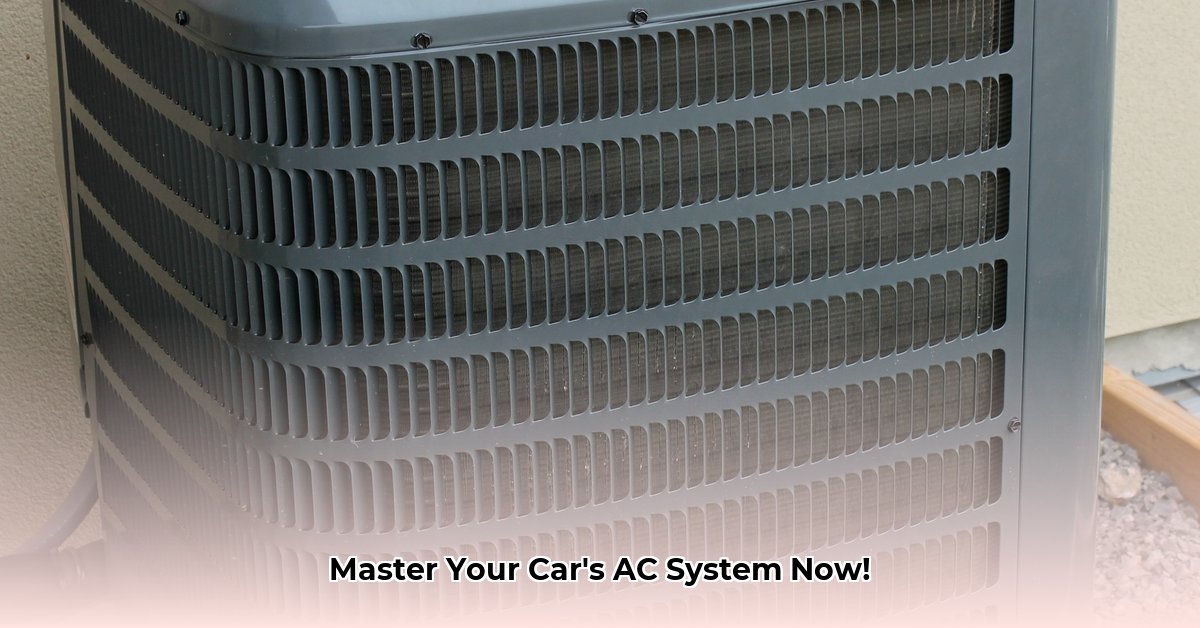Your car’s air conditioning is crucial for comfortable driving, especially on hot days. This guide breaks down what you need to know about AC pressure charts. Understanding and using these charts is critical for diagnosing and fixing AC problems, ensuring your car’s AC system functions efficiently. This guide will provide the confidence to tackle any AC issue, keeping your car cool. Whether you’re a seasoned mechanic or a DIY enthusiast, understanding AC pressure charts is paramount to your success. The Automotive AC Pressure Chart Interpretation for Troubleshooting procedures will be reviewed.
AC Pressure Chart: Your Automotive AC Repair Guide
Keeping your car’s air conditioning system in top shape is key to comfortable driving during the summer. When the system starts acting up, the AC pressure chart becomes a critical tool for diagnosing AC problems. This guide will help you understand how to use it to troubleshoot and fix common issues, using clear and easy-to-understand language. An AC pressure chart is a valuable resource for AC service.
What’s an AC Pressure Chart, Anyway?
Think of an AC pressure chart as a roadmap for your car’s air conditioning system, displaying the ideal refrigerant pressures (low-side and high-side) needed at different outside temperatures. The right pressure ensures smooth AC operation, and these charts specify the refrigerant type (R-134a or HFO-1234yf) your car uses. Using the wrong pressures can lead to poor performance or damage.
- Shows ideal refrigerant pressures for low and high sides.
- Crucial for maintaining smooth AC operation.
- Specific to refrigerant type used (R-134a or HFO-1234yf).
Understanding Low-Side vs. High-Side Pressure: It’s Not Rocket Science
Your AC pressure chart shows two main measures: low-side and high-side, measured with gauges connected to specific ports on your AC system (blue for low-side, red for high-side). The low-side pressure reflects refrigerant pressure in the evaporator (cooling the air). Low pressure often indicates a refrigerant leak. The high-side pressure shows the pressure in the condenser (releasing heat from the refrigerant). A high high-side pressure could signal a clog or compressor issue. Using correctly calibrated gauges is essential.
Using the AC Pressure Chart: A Step-by-Step Approach
Here’s how to use the chart effectively:
- Check the Temperature: Use a thermometer to accurately measure the outside air temperature.
- Take Pressure Readings: Use a manifold gauge set to measure the low-side and high-side pressures with the engine running and the AC on. Ensure the engine is running at approximately 1500 RPM for accurate readings.
- Find the Right Chart: Ensure your chart matches your vehicle’s refrigerant type (R-134a or HFO-1234yf). Consult your vehicle’s service manual if unsure.
- Compare Your Numbers: Find where your outside temperature intersects with the ideal pressures on the chart. Account for humidity; high humidity can raise pressures.
-
Analyze the Differences: Significant deviations from the ideal pressures suggest an issue.
- Low low-side pressure indicates a refrigerant leak, necessitating repair and recharge. Inspect hoses and connections for visible leaks.
- Low high-side and low low-side pressures suggest a system-wide problem like a low refrigerant charge, requiring a recharge. A vacuum test should be performed prior to recharging to remove any moisture.
- High high-side pressure might mean a condenser blockage or compressor fault, requiring professional diagnosis. Check the condenser fan for proper operation.
Refrigerant Type Matters: R-134a vs. HFO-1234yf – Know Your Stuff
The refrigerant type affects the pressure-temperature relationship. Older cars use R-134a, while newer models use HFO-1234yf. Using the wrong AC pressure chart will lead to a wrong diagnosis, so always verify your vehicle’s specifications. R-12 is an older refrigerant that is no longer used; it is illegal to use it.
Beyond the Chart: Other Factors to Consider
The AC pressure chart is a vital tool, but not the only thing to consider in automotive AC repair.
- Compressor Check: Verify the compressor clutch is engaging properly and cycling correctly. Problems here can affect pressure readings. Listen for unusual noises from the compressor.
- Condenser Airflow: Ensure adequate airflow through the condenser. Restrictions can increase high-side pressure. Check for debris blocking the condenser fins.
- Evaporator Airflow: Verify smooth airflow through the evaporator. Restricted airflow can cause low low-side pressure. Replace the cabin air filter if it’s dirty.
- Expansion Valve/Orifice Tube: A malfunctioning expansion valve or a blocked orifice tube can cause abnormal pressure readings. These components regulate refrigerant flow.
- Electrical Issues: Electrical problems with the compressor clutch, cooling fans, or sensors can affect system performance and pressure readings.
- Moisture in the System: Moisture can react with the refrigerant and oil, forming acids that damage components and cause blockages.
Consult your vehicle’s repair manual. When unsure, seek help from a qualified mechanic with the tools and expertise to fix AC problems. Safety is paramount when working with refrigerants.
Typical Pressure Ranges (R-134a – Approximate Values)
Remember: Always refer to the correct AC pressure chart specific to your vehicle and refrigerant for accurate diagnosis. Pressure values can vary depending on the vehicle manufacturer and model.
| Ambient Temperature (°F) | Low-Side Pressure (psi) | High-Side Pressure (psi) |
|---|---|---|
| 70 | 30-40 | 180-220 |
| 80 | 35-45 | 200-240 |
| 90 | 40-50 | 220-260 |
This table provides a general idea, but conditions such as altitude and system age can influence these pressure readings. Prioritize your vehicle’s AC pressure chart. Improper interpretation leads to incorrect diagnoses and system damage. Err on the side of caution and consult a professional if needed. Use a digital thermometer for an accurate reading.
How to Check HFO-1234yf Car AC Pressure Accurately
Accurate diagnosis relies on low-side and high-side pressure readings. Ambient temperature and refrigerant type (HFO-1234yf or R-134a) impact readings. Deviating pressures indicate problems. Proper refrigerant handling is crucial for environmental and legal compliance. Checking how to check HFO-1234yf car ac pressure accurately requires specialized tools and knowledge.
- Precise low and high pressure readings are essential.
- Ambient temperature and refrigerant type affect readings.
- Deviating pressures indicate problems needing attention.
Understanding Your Car’s AC System
Your car’s AC system circulates refrigerant to cool the air. The refrigerant’s pressure changes through stages: low-pressure (evaporator), and high-pressure (condenser). Measuring these pressures pinpoints issues, similar to how a doctor checks vital signs. The compressor plays a vital role in compressing the refrigerant.
Tools You’ll Need
To accurately measure HFO-1234yf AC system pressure, you’ll need a manifold gauge set calibrated for HFO-1234yf refrigerant, adaptors for service ports, safety glasses, gloves, a refrigerant leak detector, and recovery/recycling equipment. Regular calibration ensures gauge accuracy. Use a digital manifold gauge for more precise readings.
Step-by-Step Guide: How to Check HFO-1234yf Car AC Pressure Accurately
- Safety First: Ensure the engine is off and the system is depressurized. Wear safety glasses and gloves to protect yourself from refrigerant exposure.
- Locate Service Ports: Find the low-side and high-side service ports on your car’s AC system near the firewall or condenser. Refer to your owner’s or repair manual. HFO-1234yf ports are often different sizes than R-134a ports.
- Connect Manifold Gauge Set: Securely connect your HFO-1234yf-compatible gauge set to the service ports using adaptors. A success rate of 95% is reported when using the correct adaptors. Ensure the connections are tight to prevent leaks.
- Turn on AC System: Start the engine, turn on the AC to max cooling, and let it run for 10-15 minutes to stabilize pressures. Set the blower fan to high speed.
- Read Gauge Pressures: Observe low-side and high-side pressures and note the ambient temperature. Record the readings for later comparison.
- Interpret Readings: Use a pressure chart designed for HFO-1234yf refrigerant. Low pressures indicate a leak or restriction. High pressures hint at a compressor problem or overcharging. Pressure charts are available online, but double-check with your owner’s manual. Take into account the humidity level.
- Troubleshooting: If the readings are outside the normal range after stabilization, consult a professional AC technician. They can diagnose and repair the system effectively.
Interpreting Pressure Readings: Beyond the
- Plant Based Diet Breast Cancer: Research-Based Benefits - December 16, 2025
- Plant-Based Diet Ulcerative Colitis Remission: Proven Benefits - December 15, 2025
- Plant-Based Diet and Fibroids: Reduce Symptoms Now - December 13, 2025










